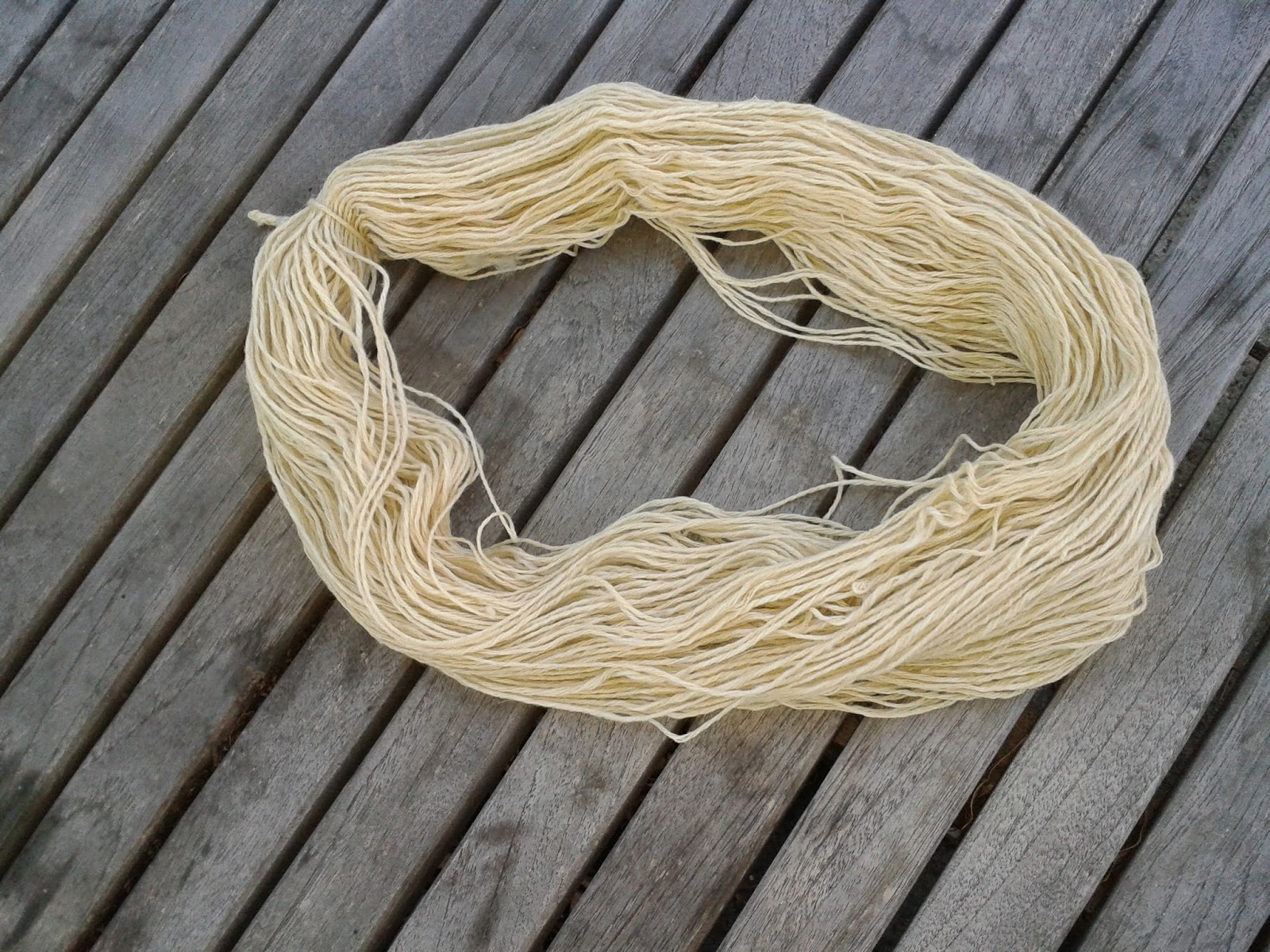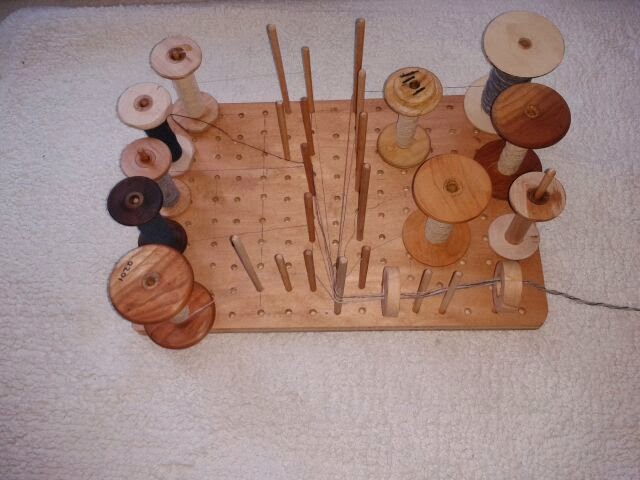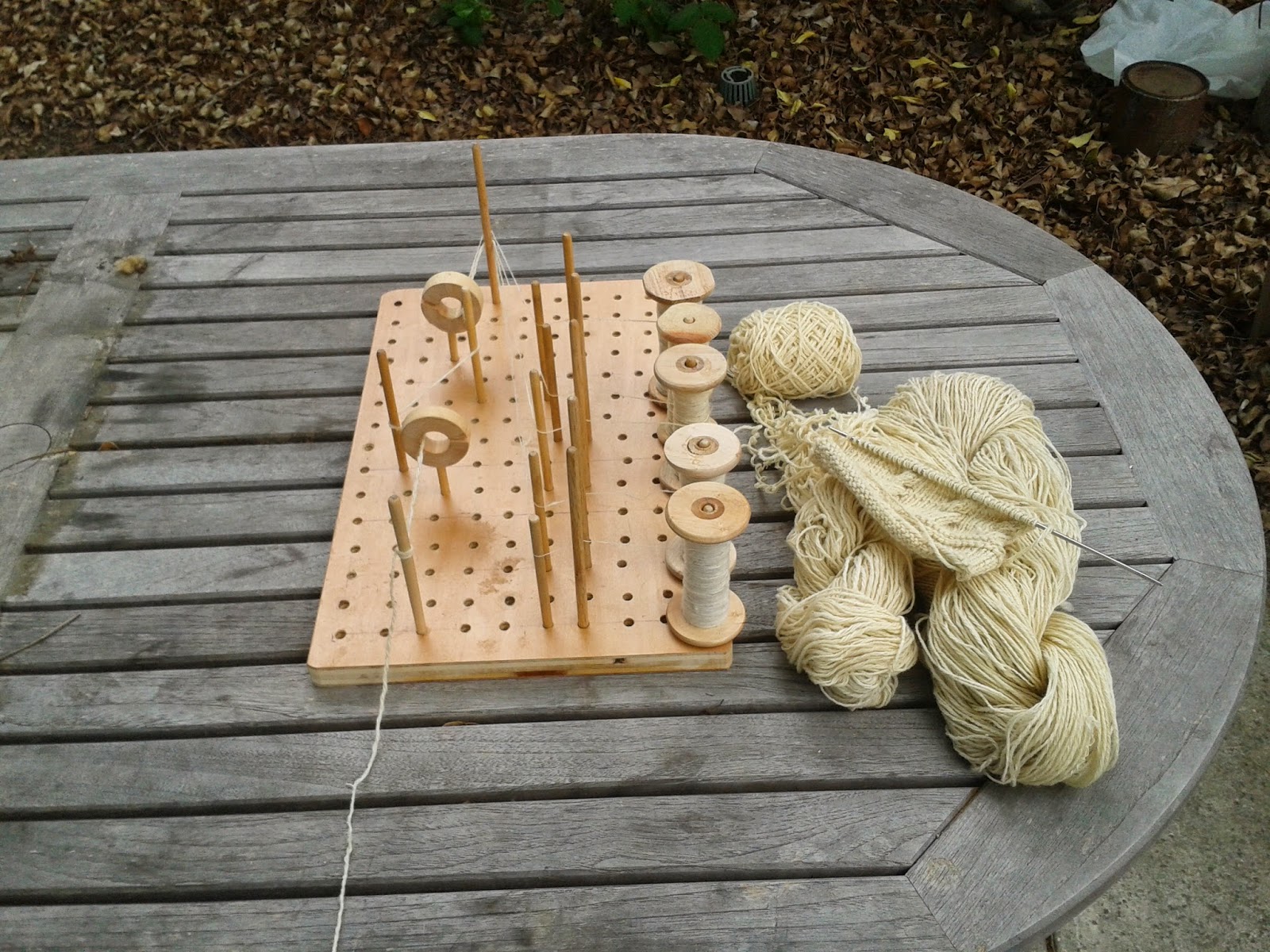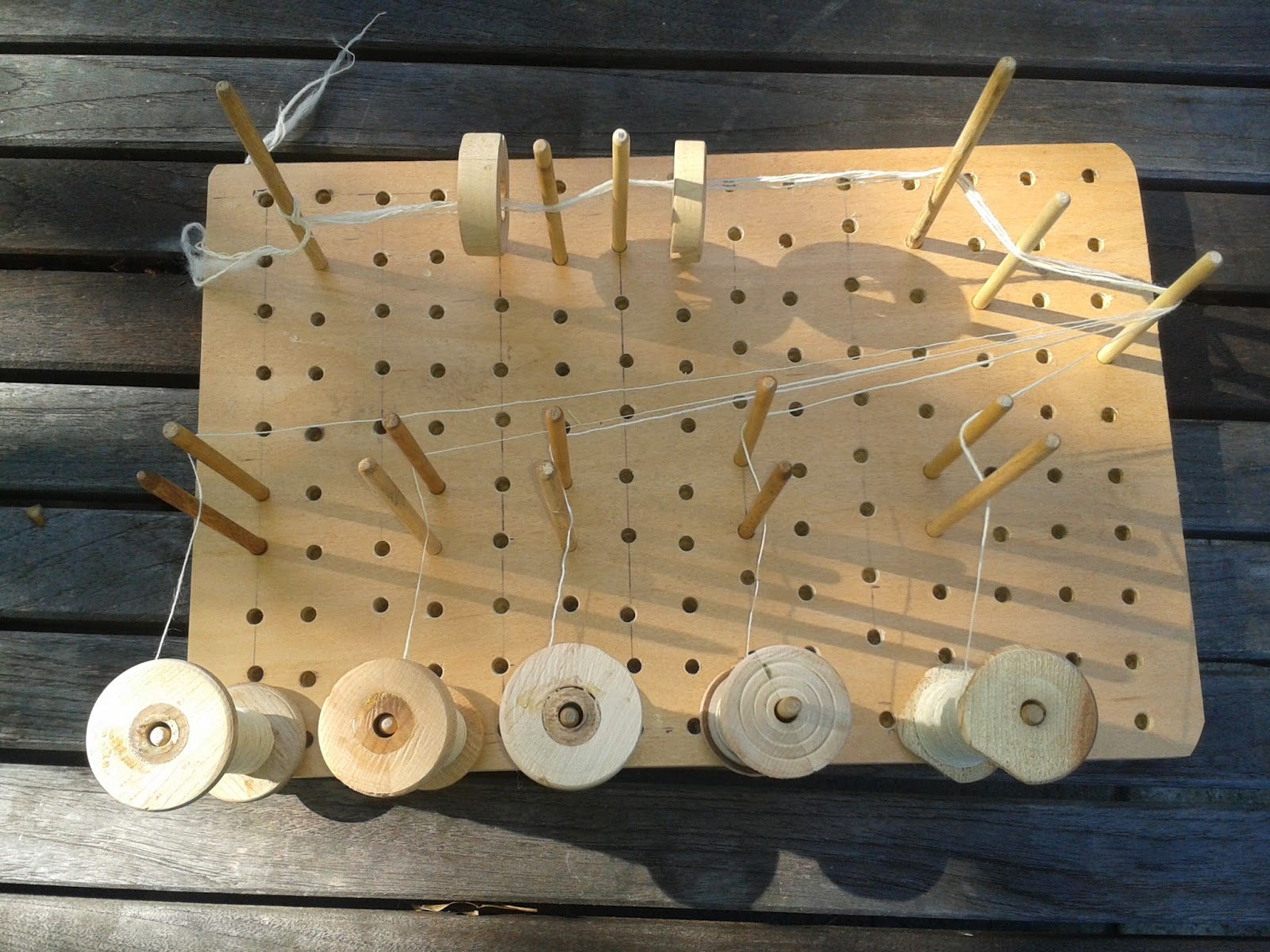Begin with the end in mind.
Is a yarn that you might be able to cobble into "some textile" at some point in the future what you need to focus on at this time? Think of all of your wants and needs, including textiles. Is yarn for "some textile" the effort that you want to make at this time?
In particular, I was thinking about the piles of "art yarns" that I saw at CNCH. If you are going to put the effort into making art yarn then think the project through, and make a finished object that is worthy of being worn on the red carpet. Having thought the project through from beginning to end, the object will be better.
Think of a builder. Do they just take a load of wood to a lot and start cutting and nailing? No, they have a plan, and they take the sizes of wood and amounts of supplies needed for the plan. They stop to make a foundation. Without a plan, they might not have the big beams that they need to hold everything up and support the load. If the builder has a good plan, he can use it to build house after house, and they will all be good, strong, beautiful houses.
If the builder is very clever, they can build strong structures that will withstand storms, without using those big beams. However, this takes real planning. Likewise the textile crafter needs to plan for rain, washing machines, dry cleaners, wear, abrasion, stretch, wind, sun, cold, heat, sweat, and etc. This takes real thought and cleverness.
That said, a lot of the yarns that I use are based on rather standard singles. I have no problem spinning long wool 10s and 40s because I like these singles as building blocks for yarns used for outer wear and socks. I have plans for the fabrics/objects that I like, and I use those plans over and over because I know they work. If I have the singles on hand, they can be quickly plied up and dyed to make a very nice, and functional fabric. I can do this, because I have thought these objects through, I make these objects on a regular basis, and I have thought about how much I need to produce.
These singles are my "2x4s", and like a builder I have different kinds of 2x4s. A builder might have 2x4s of oak, pine, red wood, and maple. Each has its proper use, and there are stacks of each in the lumber shed, ready to use. My stocks of singles are from different fibers and each has its proper use. If I just spin yarns and then plan the textiles from the yarns, then at some point, I will have yarns that want to be out door fencing (red wood) when what I need now is kitchen cabinets (maple). If I let the already spun yarn define textile projects, then I may end up with not quite enough yarn or a little bit too much. If there is not enough, then the design fails, and if there is too much then there is wasted time, effort, and fiber.
If you are not particular about using the right yarn for your textile, you might as well use mill spun. Mill spun works very well for generic textiles. If you are going to the effort of making a textile from hand spun, you might as well plan it out and make an exceptional textile.
No, it is better to be an intentional spinner, and spin the yarns wanted for the objects desired. See Alden Amos, The Big Book of Hand Spinning.
Is a yarn that you might be able to cobble into "some textile" at some point in the future what you need to focus on at this time? Think of all of your wants and needs, including textiles. Is yarn for "some textile" the effort that you want to make at this time?
In particular, I was thinking about the piles of "art yarns" that I saw at CNCH. If you are going to put the effort into making art yarn then think the project through, and make a finished object that is worthy of being worn on the red carpet. Having thought the project through from beginning to end, the object will be better.
Think of a builder. Do they just take a load of wood to a lot and start cutting and nailing? No, they have a plan, and they take the sizes of wood and amounts of supplies needed for the plan. They stop to make a foundation. Without a plan, they might not have the big beams that they need to hold everything up and support the load. If the builder has a good plan, he can use it to build house after house, and they will all be good, strong, beautiful houses.
If the builder is very clever, they can build strong structures that will withstand storms, without using those big beams. However, this takes real planning. Likewise the textile crafter needs to plan for rain, washing machines, dry cleaners, wear, abrasion, stretch, wind, sun, cold, heat, sweat, and etc. This takes real thought and cleverness.
That said, a lot of the yarns that I use are based on rather standard singles. I have no problem spinning long wool 10s and 40s because I like these singles as building blocks for yarns used for outer wear and socks. I have plans for the fabrics/objects that I like, and I use those plans over and over because I know they work. If I have the singles on hand, they can be quickly plied up and dyed to make a very nice, and functional fabric. I can do this, because I have thought these objects through, I make these objects on a regular basis, and I have thought about how much I need to produce.
These singles are my "2x4s", and like a builder I have different kinds of 2x4s. A builder might have 2x4s of oak, pine, red wood, and maple. Each has its proper use, and there are stacks of each in the lumber shed, ready to use. My stocks of singles are from different fibers and each has its proper use. If I just spin yarns and then plan the textiles from the yarns, then at some point, I will have yarns that want to be out door fencing (red wood) when what I need now is kitchen cabinets (maple). If I let the already spun yarn define textile projects, then I may end up with not quite enough yarn or a little bit too much. If there is not enough, then the design fails, and if there is too much then there is wasted time, effort, and fiber.
If you are not particular about using the right yarn for your textile, you might as well use mill spun. Mill spun works very well for generic textiles. If you are going to the effort of making a textile from hand spun, you might as well plan it out and make an exceptional textile.
No, it is better to be an intentional spinner, and spin the yarns wanted for the objects desired. See Alden Amos, The Big Book of Hand Spinning.





.jpg)